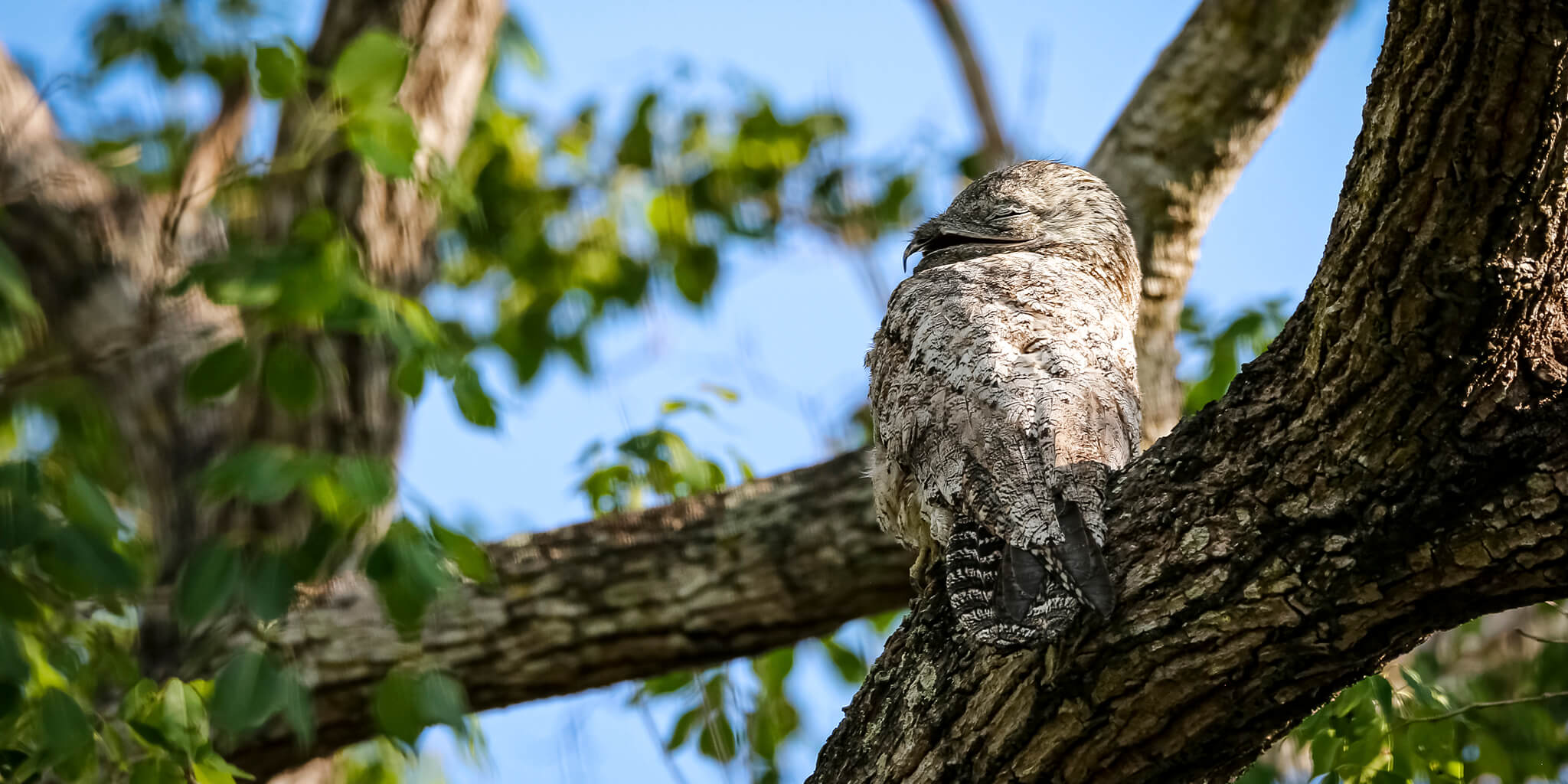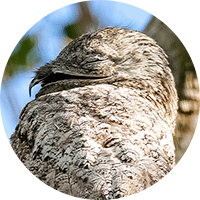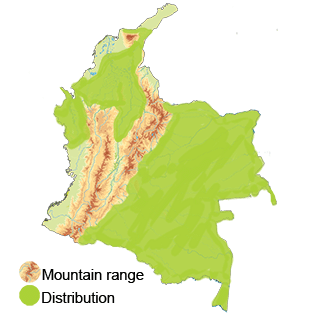Great Potoo
The Great Potoo (Nyctibius grandis) Read in Spanish
Appearance: The Great Potoo is a large, cryptically colored bird with mottled gray, brown, and white plumage, which helps it blend in seamlessly with tree bark. It has a large head with large yellow eyes and a broad, flat bill ideal for catching insects. The Great Potoo has a distinctive call that sounds like a haunting, repeated mournful wail.
Habitat: Great Potoos inhabit mature forests, including rainforests, deciduous forests, and sometimes savannas with scattered trees. They are most commonly found in areas with tall trees and dense canopies where they can roost during the day and hunt for insects at night.
Behavior: Great Potoos are primarily nocturnal and rely on camouflage to avoid detection during the day, when they roost vertically on tree branches to blend in with their surroundings. Their feeding behavior involves perching motionless and waiting for flying insects to pass by, which they catch with a sudden and precise strike. They are typically solitary birds and are known for their cryptic behaviors to avoid predators.
Breeding: Great Potoos have unique breeding habits, with the female usually laying one or two eggs on a small branch in the canopy. The eggs are often white and speckled, resembling lichen-covered twigs, providing additional camouflage. Both parents take turns incubating the eggs and caring for the chicks.
Conservation Status: The Great Potoo is listed as a species of "Least Concern" by the IUCN, indicating that it is not currently facing significant threats to its population.
Distribution
The Great Potoo (Nyctibius grandis)
Amazon Region: The Great Potoo can be found in the Amazon rainforest areas, which includes departments such as Amazonas, Caquetá, Guaviare, Putumayo, and Vaupés. The species find suitable habitats for foraging and nesting in the dense forest canopies.
Pacific Coast: Along the Pacific coast it is found in departments like Chocó and Valle del Cauca. The humid forests along the coast provide an ideal environment for this nocturnal bird to hunt for insects and roost during the day.
Andean Region: In the Andean region of Colombia, including departments such as Antioquia, Caldas, Risaralda, and Tolima, the Great Potoo can be found in montane forests and cloud forests at higher elevations. These areas offer diverse habitats where the species can thrive.
Orinoco Region: The Great Potoo can be observed in regions along the Orinoco River basin, such as Casanare, Meta, and Vichada. The vast plains and gallery forests in these areas provide suitable habitats for the species to inhabit.
Other Regions: The Great Potoo may also have sporadic populations in other regions of Colombia where suitable forested habitats are present, such as in the Eastern Llanos, Magdalena Valley, and the Sierra Nevada de Santa Marta.
Taxonomy
The Great Potoo (Nyctibius grandis)
- Kingdom: Animalia
- Phylum: Chordata
- Class: Aves (Birds)
- Order: Caprimulgiformes
- Family: Nyctibiidae
- Genus: Nyctibius
- Species: Nyctibius grandis
Vocalizations
The Great Potoo (Nyctibius grandis)
- Mournful Wail: The most recognizable vocalization of the Great Potoo is its mournful wail, which is often heard during the night in the forests where they inhabit. This call is a series of long, descending wails that can carry over long distances, creating a haunting atmosphere in the darkness.
- Deep Hoots and Grunts: In addition to the wail, Great Potoos are known to produce deep hoots and grunts, especially during interactions with conspecifics or in response to perceived threats. These calls serve as territorial signals and may also help individuals locate each other in the dense forest environment.
- Low-pitched and Monotonous: The vocalizations of the Great Potoo are characterized by their low pitch and monotonous quality, creating a sense of mystery and intrigue in the nighttime forest ambiance. These vocalizations are used to establish and maintain contact between individuals within their territories.
- Variability: While the mournful wail is the most iconic vocalization of the Great Potoo, the species also produces a variety of other vocalizations, including rattling sounds, hisses, and clicks. These vocalizations can convey different messages related to territorial defense, courtship rituals, and general communication.





